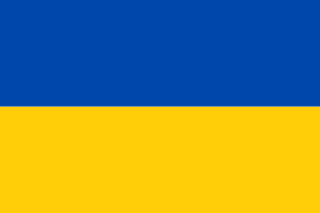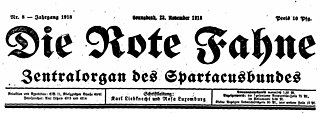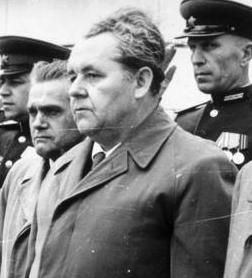Related Research Articles
The Austrian resistance was launched in response to the rise of the fascists across Europe and, more specifically, to the Anschluss in 1938 and resulting occupation of Austria by Germany.

The Free State of Brunswick was a state of the German Reich in the time of the Weimar Republic. It was formed after the abolition of the Duchy of Brunswick in the course of the German revolution of 1918–1919. Its capital was Braunschweig (Brunswick). In 1933 it was de facto abolished by Nazi Germany. The free state was disestablished after the Second World War in November 1946.

Die Rote Fahne was a German newspaper originally founded in 1876 by Socialist Worker's Party leader Wilhelm Hasselmann, and which has been since published on and off, at times underground, by German Socialists and Communists. Karl Liebknecht and Rosa Luxemburg famously published it in 1918 as organ of the Spartacus League.

The Ulbricht Group was a group of exiled members of the Communist Party of Germany and the National Committee for a Free Germany, led by Walter Ulbricht, who flew from the Soviet Union back to Germany on April 30, 1945. Composed of functionaries from the KPD and ten anti-fascist prisoners of war, their job was to seek out anti-fascist individuals and prepare the groundwork for the re-establishment of communist organizations and unions in postwar Berlin. There were two additional regional groups, the Ackermann Group in Saxony and the Sobottka Group in Mecklenburg. Many of the group's members later became high-level officials in the government of the German Democratic Republic (GDR).
International Group of Democratic Socialists was a Stockholm-based discussion group and study circle of social democrats, active from 1942 to 1945. Participants included Willy Brandt, Alva Myrdal, Gunnar Myrdal and Bruno Kreisky. The group focused largely on discussions of rebuilding post-war Europe.
German Exilliteratur is the name for works of German literature written in the German diaspora by refugee authors who fled from Nazi Germany, Nazi Austria, and the occupied territories between 1933 and 1945. These dissident writers, poets and artists, many of whom were of Jewish ancestry or held anti-Nazi beliefs, fled into exile in 1933 after the Nazi Party came to power in Germany and after Nazi Germany annexed Austria by the Anschluss in 1938, abolished the freedom of press, and started to prosecute authors and ban works.

Brandenburg-Görden Prison is located on Anton-Saefkow-Allee in the Görden quarter of Brandenburg an der Havel. Erected between 1927 and 1935, it was built to be the most secure and modern prison in Europe. Both criminal and political prisoners were sent there, as well as people imprisoned for preventive detention or for interrogation and prisoners of war. Built with a capacity of 1,800, it sometimes held over 4,000 during the Nazi era. After the war, East Germany used the prison to incarcerate at least 170,000 people. Prisoners were used for labor, with them making things such as tractors, kitchen furniture, uniforms and radiation suits, electric motors, shoes, and cars.
German individualist philosopher Max Stirner became an important early influence in anarchism. Afterwards Johann Most became an important anarchist propagandist in both Germany and in the United States. In the late 19th century and early 20th century there appeared individualist anarchists influenced by Stirner such as John Henry Mackay, Adolf Brand and Anselm Ruest and Mynona.

Hotel Lux (Люксъ) was a hotel in Moscow during the Soviet Union, housing many leading exiled and visiting Communists. During the Nazi era, exiles from all over Europe went there, particularly from Germany. A number of them became leading figures in German politics in the postwar era. Initial reports of the hotel were good, although its problem with rats was mentioned as early as 1921. Communists from more than 50 countries came for congresses, for training or to work. By the 1930s, Joseph Stalin had come to regard the international character of the hotel with suspicion and its occupants as potential spies. His purges created an atmosphere of fear among the occupants, who were faced with mistrust, denunciations, and nightly arrests. The purges at the hotel peaked between 1936 and 1938. Germans who had fled Nazi Germany, seeking safety in the Soviet Union, were interrogated, arrested, tortured, and sent to forced labour camps. Most of the 178 leading German communists who were killed in Stalin's purges were residents of Hotel Lux.

Walter Janka was a German communist, political activist and writer who became a publisher.

Paul Merker was an activist member of Germany's Communist Party who later became a politician and a top official of East Germany's ruling SED .
Erich Garske was a German political activist (KPD) and, after 1933, a resistance activist. He was executed by the Nazis in December 1943.

Jussuf Abbo, originally Jussuff Abbu, was a Jewish visual artist from Ottoman Palestine. His mediums included printmaking and sculpture. He was active mainly in Germany until fleeing to England in 1935 due to Nazi persecution.
The Free-Germany Movement was a movement of German exiled opponents to the rule of Adolf Hitler during the Second World War. The movement was led by Otto Strasser.

Walter Küchenmeister was a German machine technician, journalist, editor, writer and resistance fighter against the Nazi regime. Küchenmeister was a member of the anti-fascist resistance group, that was later called the Red Orchestra by the Abwehr. Küchenmeister was notable for being part of the close group that constituted the Schulze-Boysen group of individuals.
Christine Fischer-Defoy is a German woman writer, film director and cultural historian.
Albert Kuntz was a German goldsmith, soldier, communist and concentration camp victim. A soldier in the First World War, Kuntz rose to become an elected representative of the German Communist Party in Berlin's Prussian Landtag. In 1933 he was arrested by the Gestapo, and sent to a succession of prisons and concentration camps. He died in January 1945 at the Mittelbau-Dora concentration camp, where he had been organizing the sabotage of the V-2 rocket production line. Following his death, he was revered as an anti-fascist hero in East Germany.
Erich Otto Reinhold Arendt was a German poet and translator.

Erich Wollenberg was until 1933 a leading member of the Communist Party of Germany (KPD), and in later years an independent journalist and publicist.
Erich Ernst Kops was a German politician, diplomat, and Holocaust survivor.
References
- ↑ Society for Exile Studies (1985). Gedanken an Deutschland im Exil und andere Themen. Text + Kritik. p. 152. ISBN 978-3-88377-205-9.
- 1 2 Max Paul Friedman (4 August 2003). Nazis and Good Neighbors: The United States Campaign Against the Germans of Latin America in World War II. Cambridge University Press. p. 71. ISBN 978-0-521-82246-6.
- ↑ Lexicon Sozialistischer Literatur. Springer-Verlag. pp. 39–. ISBN 978-3-476-03548-6.
- 1 2 3 4 5 Wolfgang Kießling (1984). Exil in Lateinamerika. Reclam. pp. 427, 430–432.
- 1 2 Wolfgang Schumann (1975). Vom Yberfall auf die Sowjetunion bis zur sowjetischen Gegenoffensive bei Stalingrad (Juni 1941 bis November 1942). Pahl-Rugenstein. p. 574. ISBN 978-3-7609-0170-1.
- ↑ Alisa Douer (1995). Qué lejos está Viena: Latinoamérica como lugar de exilio de escritores y artistas austríacos. Centro de Documentación de la Literatura Austríaca Moderna. p. 94. ISBN 978-3-900467-44-9.
- ↑ Suzanne Shipley Toliver (1 January 1984). Exile and the Elemental in the Poetry of Erich Arendt. P. Lang Pub. p. 13. ISBN 978-0-8204-0081-5.
- ↑ Werner Röder; Herbert A. Strauss; Dieter Marc Schneider; Louise Forsyth (10 November 2011). Politik, Wirtschaft, Öffentliches Leben. Walter de Gruyter. p. 49. ISBN 978-3-11-097028-9.
- ↑ Wolfgang Kiessling (1974). Alemania Libre in Mexiko. Akademie-Verlag. pp. 164–165.